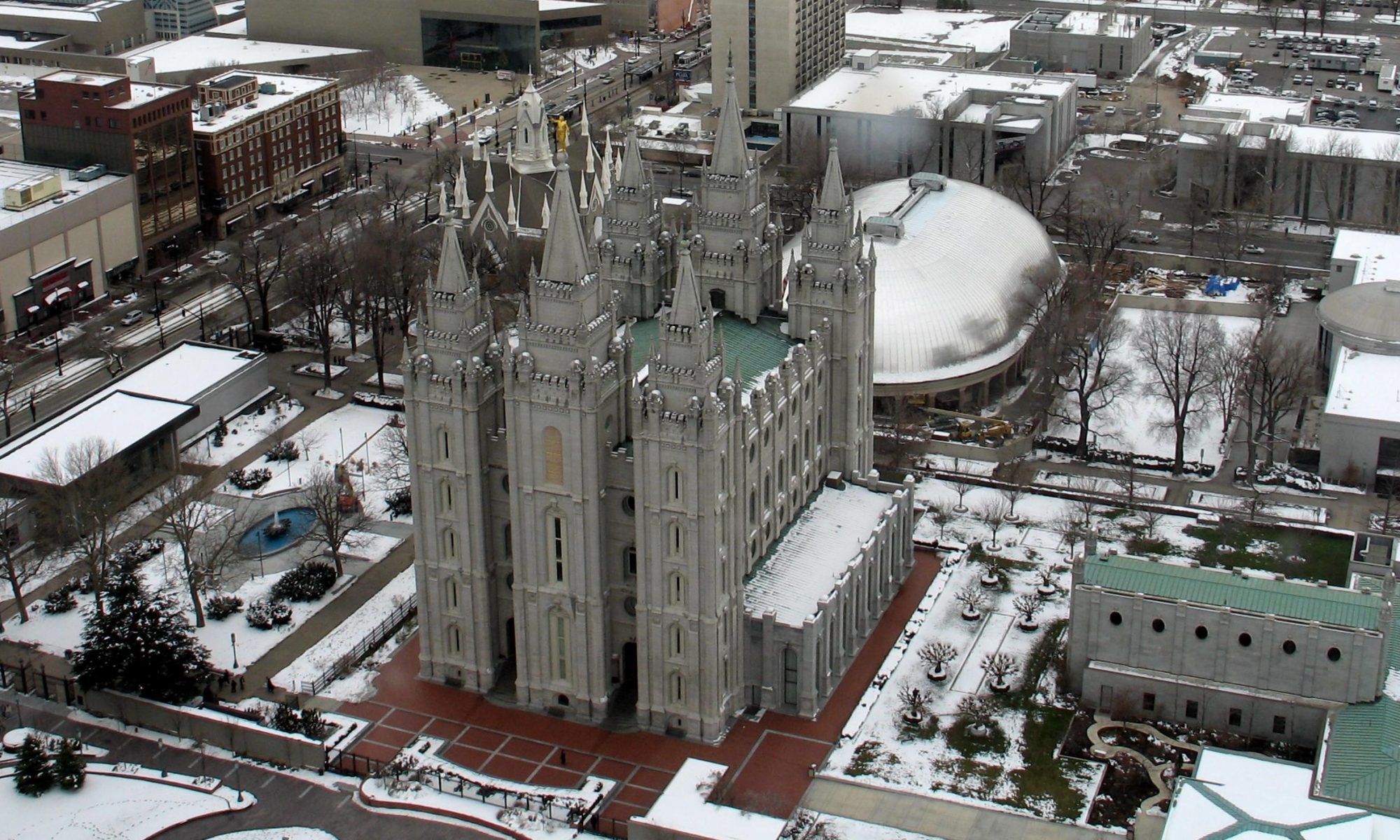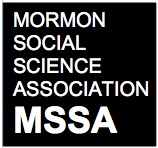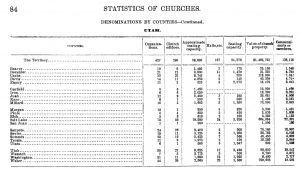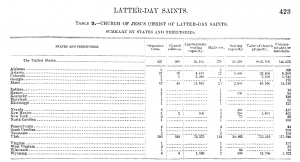Several members of the Mormon Social Science Association are putting together an edited volume on the Mormon Moment. The complete Call for Chapter Proposals can be found here. Interested scholars can contact Ryan T. Cragun (ryantcragun@gmail.com).
Ask An Expert: Are converts to the LDS Church getting older?
Q: Are new converts to the LDS Church in the U.S. today, as a class, older than they were in preceding years? Is there any trend data by age groups available? In American Grace, Putnam and Campbell found that young Americans tend to be more tolerant and moderate in their social views than older Americans. The young are more likely to reject the culture, if not the doctrine, of a rigidly conservative religious – political culture. “A growing number of Americans, especially young people, have come to disavow religion. For many, their aversion to religion is rooted in unease with the association between religion and conservative politics,” they wrote. I’m trying to find out if the same phenomenon reported by Putnam and Campbell is impacting the LDS Church.
A: First, thank you for the question.
Second, this is the first time the “experts” have been stumped. Based on the responses received, there are no data available to answer this question. It’s possible that the Church Research Information Division of the LDS Church has some data on this question, but even our contacts inside the Church Research Information Division said they had not looked into this question.
The datasets that exist – primarily US based – that include a fair number of Mormons do not include enough converts to Mormonism over a long enough period of time such that an answer to this question can be derived.
The experts universally agreed that this is an interesting question, but that there are no data to answer it.
“A Place in This Church”: An Interview with Richard Lyman Bushman
Larry Alan Brown, a writer living in Alpine, Utah, conducted this interview with Richard Bushman on August 1, 2012, at his summer home in Provo, Utah. Dr. Bushman is the Gouverneur Morris Professor of History emeritus at Columbia University, a renowned scholar of American and Mormon history and author of the critically acclaimed Joseph Smith: Rough Stone Rolling, for which he received the Evans Biography Award. A practicing member of the Church of Jesus Christ of Latter-day Saints, he and his wife Claudia live in New York City.
Read the entire transcript of the interview here.
2012 – Autumn Newsletter
The Fall 2012 Newsletter is now available. Download here.
Mormon Media Studies Symposium 2012
We invite you to the Mormon Media Studies Symposium 2012 on November 8 – 9 at the BYU Conference Center in Provo, UT. The symposium is dedicated to fostering the academic study of all aspects of Mormons and the media, past and present. This year there will be a special focus on what has been called the ‘Mormon Moment’ and the media.
The 2012 symposium theme – “Mormon Moment(s) and the Media” – was inspired by Newsweek magazine’s June 2011 cover story, entitled: “THE MORMON MOMENT.” The two-day conference will feature academic paper presentations and panel discussions by expert scholars and media practitioners on a wide variety of topics including: Media coverage of religion, Mormonism and Mitt Romney during the 2012 campaign; the “I’m a Mormon” advertising campaign; Book of Mormon Musical; media literacy and media use in LDS families; Internet use and blogging by Mormons; LDS musicians, music, radio, and television; and much more.
The symposium is free and no pre-registration is required. If you would like to pre-order lunch, please call (801) 422-7692. I invite you to view the schedule here or see the attached flyer. You may also visit the symposium website for more information.
Applied Social Science Position – Research Information Division of The Church of Jesus Christ of Latter-day Saints
The Research Information Division of the LDS Church is hiring. Please see the posted PDF with additional information.
18th Annual Arrington Mormon History Lecture
Dr. Terryl Givens Presents:
“The Prophecy of Enoch as Restoration Blueprint ”
Thursday, September 20, 2012, 7:00 pm
Logan LDS Tabernacle
50 N. Main, Logan, Utah
There is also a student writing contest in connection with the lecture. See here.
Q: Where can I find information on the vital statistics and activity rates of Mormons in the 19th and early 20th centuries?
Q: I am trying to find vital statistics and church activity statistics for the late nineteenth and early twentieth centuries for Utah. Does anyone have an idea where I might look?
A: We had two very helpful responses.
Armand Mauss suggested that the person asking about this information visit the new LDS Church library and archives in Salt Lake City. While there, contacting Rick Turley would be a good idea as he would know if such information exists. Other scholars who might have information on this would be: Tim Heaton, Tom Alexander, Bill Hartley, and Mike Quinn.
Anne Leahy did a bit of legwork to help answer the question. She found a book titled “Membership of the Church of Jesus Christ of Latter-day Saints by Age and Region, 1910-2000” in the Church History Library. She was kind enough to scan the relevant pages and send them to me digitally. I converted the scans (pdf here) into an Excel spreadsheet, which you can download here. The organization of the data is pretty bizarre as it includes cities, regions, counties and even some states as separate line entries. Even so, it does provide membership information in the US from 1910-1957, when it was compiled. To facilitate interpretation of the data, I added total LDS membership information for 1910, 1920, 1930, 1940, and 1950 from the Church Almanac. Doing so allowed me to calculate the percentage of the membership of the LDS Church that was based in the US during those years (ranges from about 85% down to 79%).
I’m unaware of any other sources specifically on the LDS Church involving membership and vital statistics information. However, there is also some helpful information on the Census Bureau’s website. For instance, in the Eleventh Census of the United States – 1890 – Vol. IX, there is a Report on the Statistics of Churches in the United States. That report provides some information on membership data at the county and state level. Here’s a copy of the number of denominations by county information:
This figure doesn’t indicate the total number of Mormons in Utah, but provides a sense of the number of members, roughly, in the state.
A better table is this one from that same report:
This table summarizes the number of Mormons by state. The bulk are in Utah and the surrounding states, but it does give a pretty good estimate of the number of Mormons in the US in 1890 – 144,352. The LDS Church reports 188,263 members that year, suggesting roughly 76% of Mormons live in the US in 1890, and 62% lived in Utah.
I checked the other censuses prior to 1900 and they do not have reports on religious affiliation. They do, however, have information on death rates. If you use Utah as a proxy for Mormons around that time, this may prove useful. Each of the Censuses is available on the census bureau’s website, starting with 1850, when Mormons were beginning to locate in Utah. See here. Another resource that may prove useful is the Statistical Abstract of the United States, which aggregates a variety of information. A quick perusal of some of the Abstracts prior to 1900 suggest they only have information on the population of Utah, but not on vital statistics. Later abstracts added additional information about populations, so you may find these more useful after the turn of the century.
Mormon Media Studies Symposium
Just received an email reminder about the Mormon Media Studies Symposium:
This is a reminder that the due date for submission of proposals for the Mormon Media Studies Symposium 2012 (to be held November 8-9 at BYU) is MONDAY, JULY 9th.
The theme of the conference is “Mormon Moments and the Media.” The attached Call for Papers, Panels, and Presentations includes all details about submissions, and announces the keynote speaker, Dr. David Campbell.
Proposals should be submitted by July 9th in Word or PDF formats as an e-mail attachment to Dr. Sherry Baker at sherry_baker@byu.edu.
Please forward this message, including the attached Call, to colleagues or lists who might be interested in submitting a proposal, or in attending the conference.
For further information about the symposium see: http://ce.byu.edu/cw/
We look forward to receiving your submissions, and hope to see you in November.
2012 – Spring Newsletter
The Fall 2011 Newsletter is now available. Download it here.



